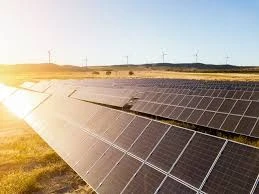solar inverter operation
Understanding Solar Inverter Operation Key Components and Functionality
Solar inverters play a crucial role in the solar energy system by converting the direct current (DC) generated by solar panels into alternating current (AC), which can be used by household appliances and fed into the electrical grid. This article will explore the operation of solar inverters, including their key components, types, and significance in the solar energy landscape.
Key Components of Solar Inverters
1. Input Stage The input stage of a solar inverter receives the DC electricity produced by the solar panels. This stage consists of multiple input connectors that ensure the inverter can handle power from various solar arrays, allowing for scalability and flexibility in installation.
2. Power Conversion Circuit The heart of the solar inverter is its power conversion circuit. This component utilizes a pair of transistors and other electronic components to switch the DC input at a high frequency, transforming it into AC output. This switching is controlled by pulse-width modulation (PWM) techniques, which help in maintaining the efficiency of power conversion.
3. Transformer In many solar inverters, particularly the traditional ones, a transformer is employed to step up the voltage of the AC output to match the grid voltage. However, advancements in technology have led to the development of transformerless inverters that reduce size and weight while maintaining safety standards.
4. Output Stage The output stage is responsible for filtering and conditioning the AC signal to ensure it is clean and stable. This section may also include grid synchronization techniques to ensure that the inverter’s output matches the grid frequency and phase, facilitating seamless integration without disturbances.
5. Cooling System Solar inverters generate heat during operation, so an effective cooling system—either active (fans) or passive (heat sinks)—is necessary to maintain optimal operating temperatures and enhance reliability.
6. Protection Mechanisms Overvoltage, overcurrent, and other faults can jeopardize inverter and system performance. To mitigate risks, inverters are equipped with various protection mechanisms, such as circuit breakers and fuses, as well as software-based monitoring systems that can disconnect the inverter in case of system failures.
solar inverter operation

Types of Solar Inverters
There are three primary types of solar inverters
1. String Inverters These are the most common type, connected to multiple solar panels (or a string of panels). They are cost-effective and easy to maintain, making them ideal for residential installations.
2. Microinverters Unlike string inverters, microinverters are installed on each solar panel. This design maximizes the energy harvested from each panel and allows for better performance in shaded conditions. However, their higher cost can be a consideration for some installations.
3. Central Inverters Central inverters are large, industrial-grade devices typically used in utility-scale solar farms. They manage a significant number of solar panels and require careful planning in terms of space and infrastructure.
Importance of Solar Inverters
Solar inverters are an integral component of any solar power system. Their efficiency directly impacts the overall energy yield of a solar installation. With the global push towards renewable energy, understanding solar inverter operation, including its components and types, becomes critical for homeowners, businesses, and engineers alike. Investing in high-quality inverters can improve energy efficiency and return on investment, driving the transition to sustainable energy sources forward.
In conclusion, solar inverters are essential for harnessing solar energy effectively. By converting DC to AC, they enable the practical use of solar-generated power, contributing to energy independence and sustainable practices worldwide. As technology continues to advance, the role of solar inverters will only grow in significance, further enhancing the accessibility and efficiency of solar energy systems.
-
Unlocking Energy Freedom with the Off Grid Solar InverterNewsJun.06,2025
-
Unlock More Solar Power with a High-Efficiency Bifacial Solar PanelNewsJun.06,2025
-
Power Your Future with High-Efficiency Monocrystalline Solar PanelsNewsJun.06,2025
-
Next-Gen Solar Power Starts with Micro Solar InvertersNewsJun.06,2025
-
Harnessing Peak Efficiency with the On Grid Solar InverterNewsJun.06,2025
-
Discover Unmatched Efficiency with the Latest String Solar InverterNewsJun.06,2025







